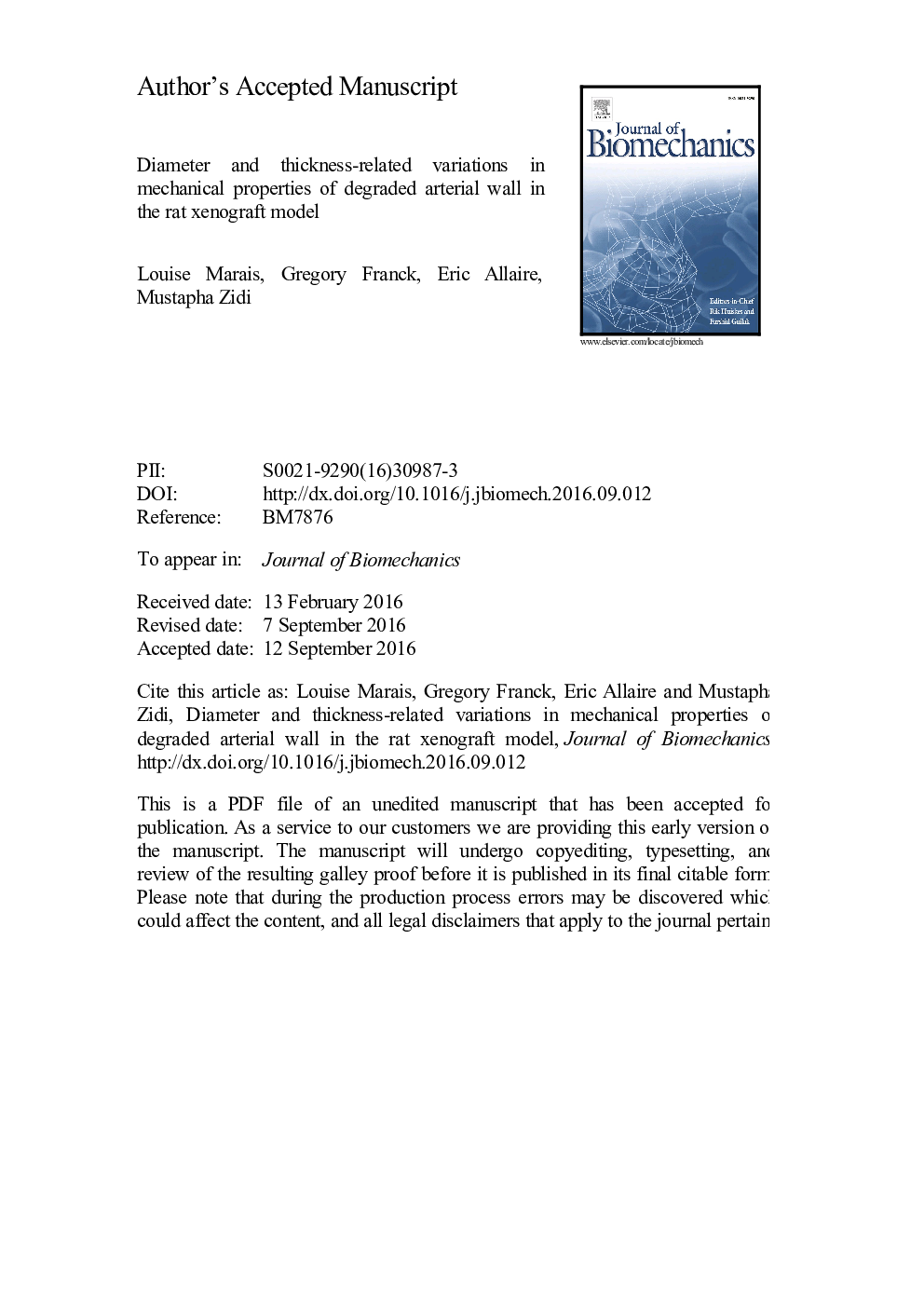| Article ID | Journal | Published Year | Pages | File Type |
|---|---|---|---|---|
| 5032557 | Journal of Biomechanics | 2016 | 24 Pages |
Abstract
The purpose of this study was to evaluate the diameter and thickness-related variations in mechanical properties of degraded arterial wall. To this end, ring tests were performed on 31 samples from the rat xenograft model of abdominal aortic aneurysm (AAA) and failure properties were determined. An inverse finite element method was then employed to identify the material parameters of a hyperelastic and incompressible strain energy function. Correlations with outer diameter and wall thickness of the rings were examined. Furthermore, we investigated the changes in mechanical properties between the grafts, which consist in guinea pig decellularized aortas, native murine aortas and degraded aortas (AAAs). Decellularized aortas presented a significantly lower ultimate strain associated with a higher stiffening rate compared to native aortas. AAAs exhibited a significantly lower ultimate stress than other groups and an extensible-but-stiff behavior. The proposed approach revealed correlations of ultimate stress and material parameters of aneurysmal aortas with outer diameter and thickness. In particular, the negative correlations of the material parameter accounting for the response of the non-collagenous matrix with diameter and thickness (r=â0.67 and r=â0.73, p<0.001) captured the gradual loss of elastin with dilatation observed in histology (r=â0.97, p<0.001). Moreover, it exposed the progressive weakening of the wall with enlargement and thickening (r=â0.64 and r=â0.69, p<0.001), suggesting that wall thickness and diameter may be indicators of rupture risk in the rat xenograft model.
Keywords
Related Topics
Physical Sciences and Engineering
Engineering
Biomedical Engineering
Authors
Louise Marais, Grégory Franck, Eric Allaire, Mustapha Zidi,
